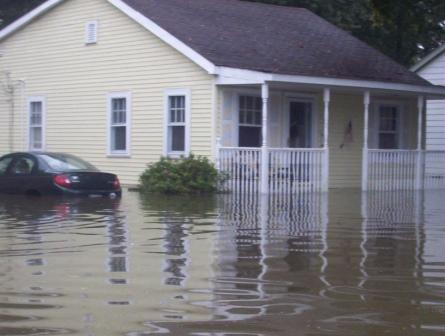
The Department of Licensing and Regulatory Affairs’ Bureau of Construction Codes offers important information on disaster safety and mitigation to protect you and your property from water and wind damage due to flooding, tornadoes and severe storms.
Just a few inches of water from flooding can cause tens of thousands of dollars in damage to your home and contents. During times of heavy rainfall, the most common catastrophe in many Michigan homes is sump pump failure causing basements to flood. First, know the different types of sump pumps and purchase a pump that is best for protecting your home. Primary sump pumps, standard in most homes, pump up to several thousand gallons an hour of seepage water out of basements to prevent flooding. The two types of primary sump pumps are submersible pumps (put under water in the sump pump basin or pit); and pedestal pumps that are not submerged but rather sit above the sump pit.
Battery backup pumps and generators provide added insurance. In the case of a power outage; sump pumps will be useless as they are electric powered. If the power goes out, the backup system or generator will take over to rid the sump basin of water and keep your basement dry.
Water-powered backup sump pump systems that do not rely on electrical power to operate are also available.
Homeowners can do regular maintenance to help avoid future sump pump problems or failure. The average lifespan of a sump pump is about 10 years and they eventually wear out. Here are a few maintenance tips:
· Unplug any electrical power leading to the unit before doing any sump pump maintenance.
· Clean out the sump pit and keep it free of any debris or stray items in the pit that may hinder the float mechanism causing it to fail. Test the float itself as they can burn out over time. Fill the pit up with water to make sure it starts and stops the sump pump as designed.
· Inspect the “check” valve to ensure it is properly installed. Check valves are set up so that when the sump pump shuts off, no water will go back into the sump pump. The check valve’s arrow should not be pointing toward the sump pump.
· Eliminate typical odors in the sump pit from standing water by cleansing the basin with one part bleach to five parts water; fill the pit with water to engage the sump pump to run the water out.
The Michigan Residential Code has minimal reference to building homes to withstand high winds because, unlike some parts of the country, Michigan is not considered to be in a high wind area. However, there is regular maintenance that homeowners can do to help reduce the amount of wind damage to their home in the event of a severe storm or tornado.
The weather resistance features of your home should be checked regularly. Preventive maintenance can minimize damage and keep a minor repair from becoming a major repair due to wind damage. Here are some things to look for:
· Nails can loosen over time. Check eaves, fascia, siding, and shingles to be sure they are nailed securely.
· Missing shingles and siding should be replaced and fastened securely.
· Check trees and shrubs for dead or decaying limbs and remove those near your home or power lines.
· Remove debris or other items from around your home that could become a projectile if picked up by the wind.
· Prefabricated sheds should be firmly anchored to the ground. These sheds have been known to take flight in high winds.
· Make sure that all downspouts are diverting water away from your home’s foundation.
LARA’s Bureau of Construction Codes works to ensure that the built environment and the systems within are sound, safe, and sanitary; the public’s health, safety, and welfare is protected; and that, through a coordinated program of code compliance, investigation and training, there is consistent application of standards. For more information, go to the Bureau of Construction Codes website atwww.michigan.gov/bcc. For more information about LARA, please visit www.michigan.gov/lara. Follow us on Twitterwww.twitter.com/michiganLARA, “Like” us on Facebook or find us on YouTube www.youtube.com/michiganLARA.